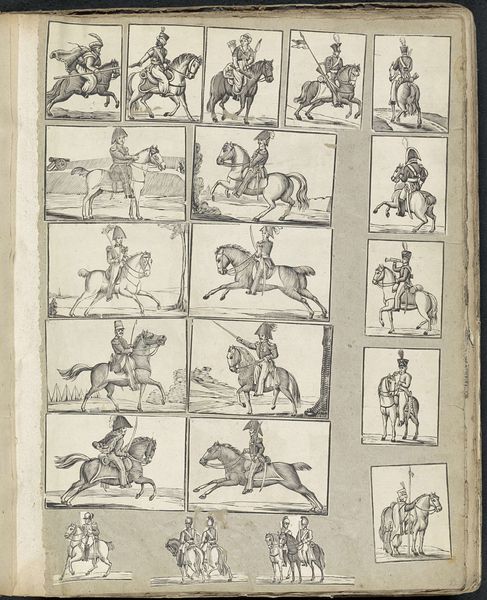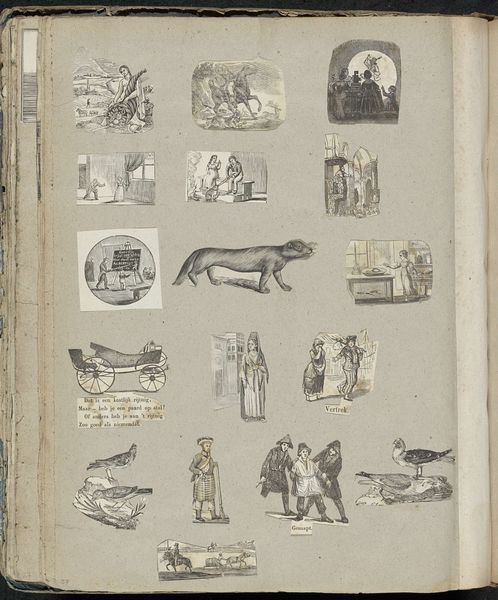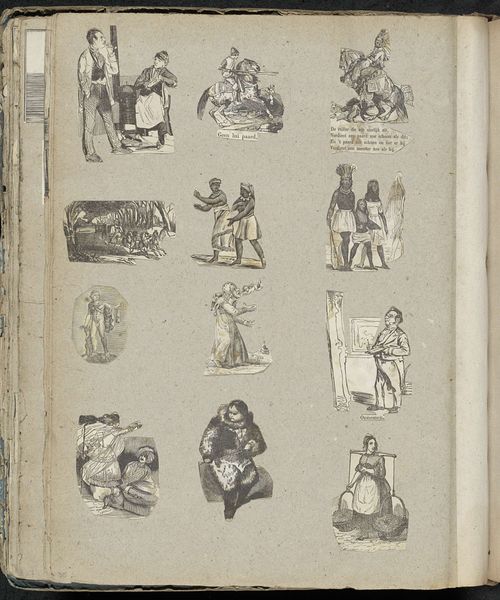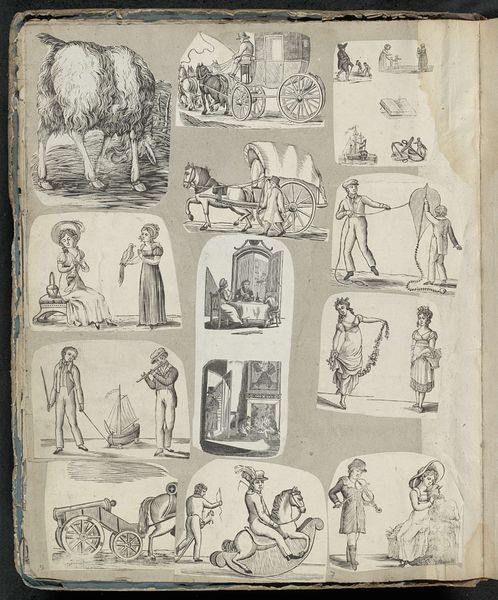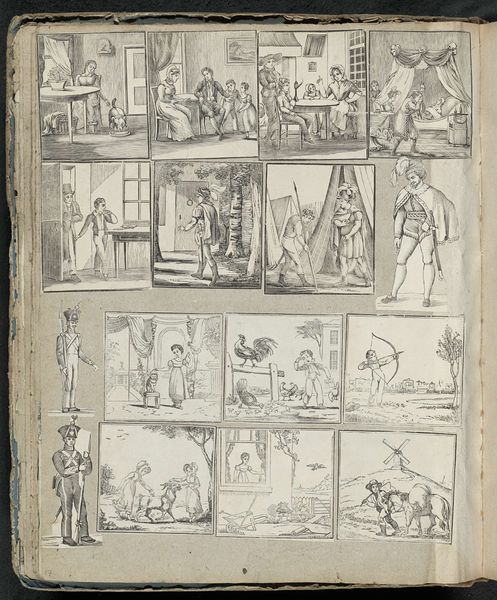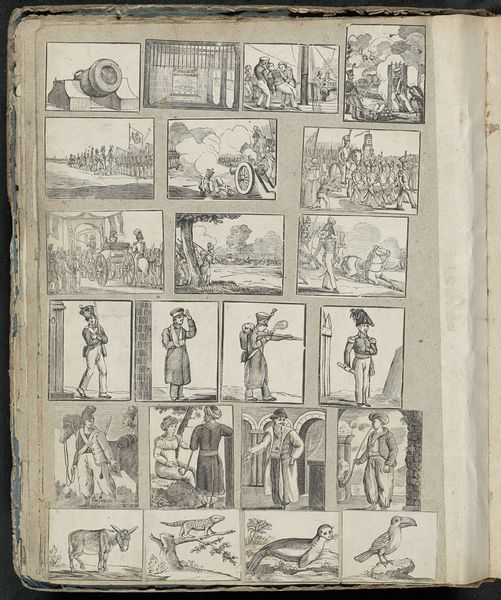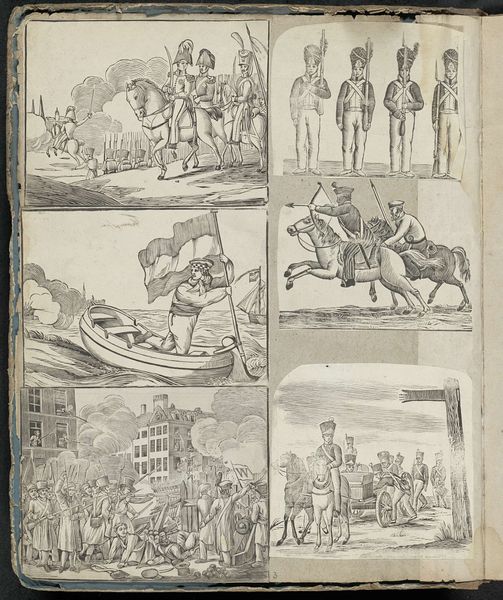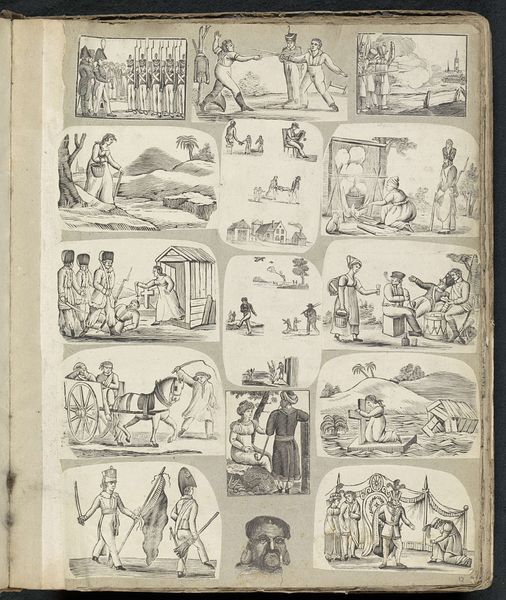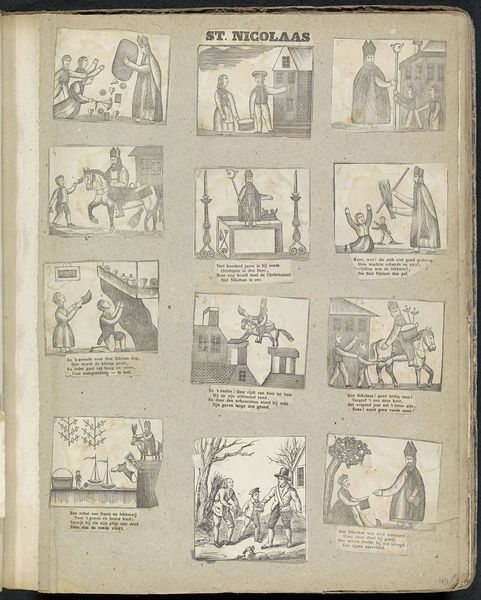
drawing, print, paper, ink
#
portrait
#
drawing
#
weapon
#
narrative-art
# print
#
figuration
#
paper
#
ink
#
genre-painting
#
history-painting
#
academic-art
#
miniature
#
realism
Dimensions: height 395 mm, width 331 mm
Copyright: Rijks Museum: Open Domain
Curator: This is a fascinating page from an album, aptly titled "Albumblad met diverse voorstellingen," dating from 1814 to 1869. The drawings, rendered in ink on paper, appear to be by Alexander Cranendoncq. Editor: Right, and it's mostly little soldiers! Or… representations of them, anyway. They've got a charmingly toy-like quality, as if someone just unleashed their wildest Napoleonic daydreams onto the page. Sort of a regiment of visual whimsy. Curator: The variety is striking. We see both individual portraits of soldiers, and larger narrative compositions suggesting genre and historical painting styles—but presented in these miniature scenes. It's intriguing how the artist adopts certain academic conventions within this almost scrapbook-like format. Editor: There's something about that contrast that tickles me, that tension between formal posturing and sheer playfulness. A serious general gives a dramatic wave and then BAM, look! A goofy little wagon right underneath him! Is there an intended connection or… just because? Curator: I'm not certain there's necessarily a narrative connection between each scene. It's more about capturing aspects of military life, perhaps to create a compilation of moments in a kind of historical typology. Note also that many soldiers are holding weapons and flags, hinting towards the patriotic themes prominent at that time. Editor: Oh, totally see it. Makes it also almost look like a spread in a propaganda magazine… But if they're separate studies, there is such freedom in this "sketchbook" feel to these images! Like peeking at the private visions swirling inside this guy's head. Is this an argument, in fact, that all sketches, even when formalized, do represent a measure of "truth," simply because of that intimacy? Curator: The album page is reflective of its historical time and suggests some important characteristics of public persona. Art academies promoted figure drawing, and these small scenes reveal some dedication. This way, “truth” can be also found in a careful historicized social frame… Editor: Right, and maybe he also had days when he just wanted to draw goofy looking horses. Regardless, seeing art presented like this--stripped down to simple elements on this album--makes me consider art in its rawest, most direct form. Curator: Agreed. These visual choices bring something of a social quality that is rarely explored and almost never documented. I wonder if we were to see more works with similar compositions, what would that make of current conventions about "finish." Editor: Hmmm. Now there's a thought to march on.
Comments
No comments
Be the first to comment and join the conversation on the ultimate creative platform.
